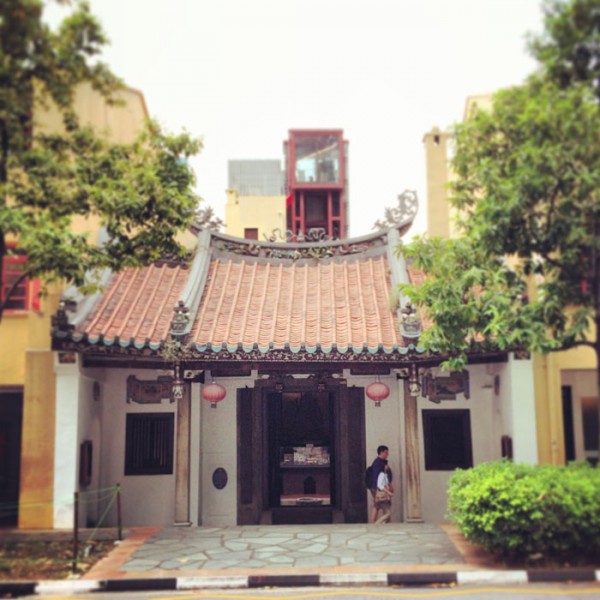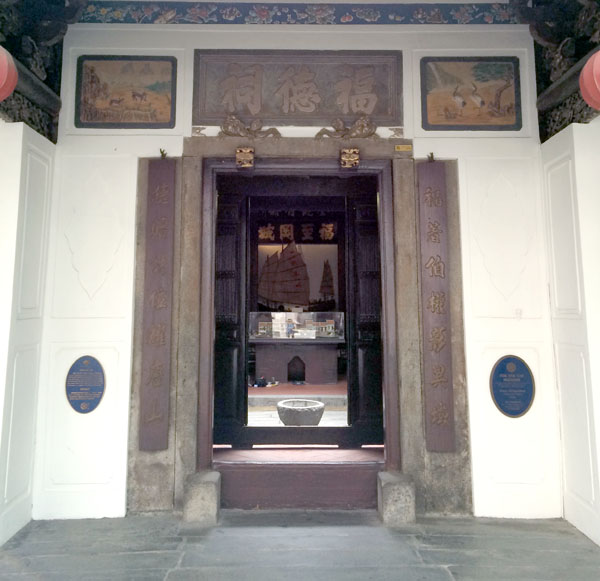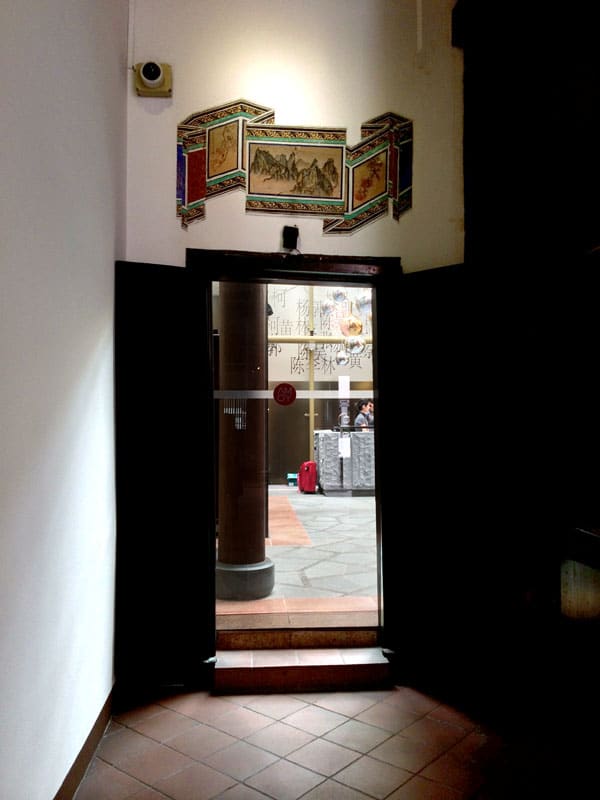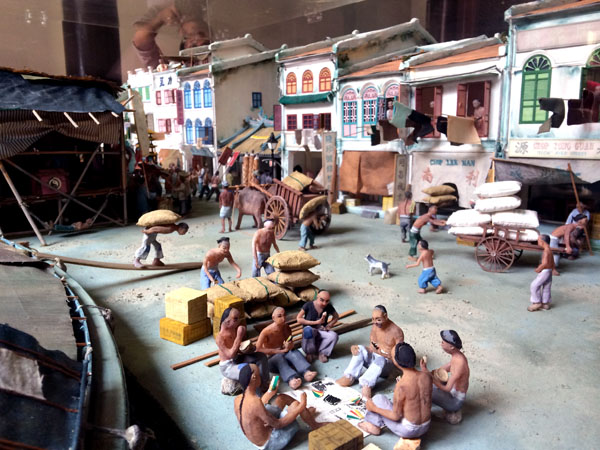
Meet the Fuk Tak Chi Temple in Singapore, which is a small building tucked between old shop houses along Telok Ayer Street. ‘Telok Ayer’ roughly translates into ‘Bay of Water’, and back in the day this little temple greeted Hakka and Cantonese immigrants fresh off the boat from China, their very first sight of Singapore, of freedom and a new life. It’s hard to imagine that now when all you see are concrete skyscrapers across the street, as Singapore continues to expand its lands by reclaiming the sea, and Telok Ayer is no longer anywhere near a bay.
My guide Jeremy — provided by my accommodation, the AMOY Hotel — greets me in front of the temple, as if I was one of those long-ago sailors finally making land after months at sea. This little building is easy to miss if you’re not looking for it. Fuk Tak Chi may have a humble, nondescript facade, but it was also the first Chinese temple built in 1824, and now owns the superlative of being Singapore’s first street museum (whatever that means exactly). Right now it stands strong, but looks a little rundown, having weathered the years and unfortunate termite attacks.

Fuk Tak Chi temple is made up of a small exposed courtyard, and an altar beyond it
The temple is small and you can take it all in at a glance. I had poked my head in before on previous trips where I walked by, but never tarried longer than a few minutes before heading out again. But this time, it’s easy to get lost in the rise and fall of Jeremy’s voice, explaining the historical and cultural significance of these seemingly inconsequential features in the temple. It would be all too easy to pass over without a good guide to tell you more — like the fact the pair of deities in the doorway are one of three pairs along Telok Ayer Street, or that one reason the temple lasted for as long as it has is because it was an important refuge for the poor people back in the day.
I also learned the temple has a family of three resident bats that lived there even through the reconstruction — Dad, Mum and Baby — and if you stare at them long enough, perched in their usual spot in the rafters, you can actually see them move.
“They are real enough,” Jeremy chuckles, pointing to the little circle of black dots on the floor. “Their poop definitely is!”
The Chinese word for ‘Bat’ sounds the same as the one for good fortune (Fu). It is believed if a bat flies through your house, a windfall is coming your way; however, if a bat decides to make its home in your house, you will enjoy everlasting good fortune.

Entrance to Amoy Hotel in the back of Fuk Tak Chi temple
And that fortune flows right to the back of the temple museum, where two incongruously modern sliding glass doors open to the lobby of the AMOY Hotel, where I am greeted with enthusiasm by Jeremy’s colleagues. What used to be the back alley behind the temple is now an air-conditioned hallway, illuminated by natural light pouring in from the glass ceiling. Some remnants of the past remain: an old well built before the temple was even constructed is now a fountain decoration that provides excellent fengshui, and a large wall bearing the family names of the first immigrants to Singapore is displayed proudly.
I am led up in the lift. Although only a mere 4-storeys high, practically a beacon tower in this row of what used to be traditional shophouses. The facades have been mostly preserved, and the AMOY Hotel’s rooms were painstakingly built into the interior of the shophouses, with much effort to keep the original structure as far as possible. Not surprisingly, the way to my room is through a dizzying maze with low ceilings, sloping corridors and many little steps.
“The people used to just build levels on an ad-hoc basis. No two shophouse measurements are alike, and subsequently no two rooms in the AMOY Hotel have the exact same measurements,” says Jeremy with a smile.
At the end of the maze of corridors is Room 214 — my room. Upon entering, I notice each room number plate is adorned with a unique Chinese character, the same ones in the lobby representing an early immigrant. Mine reads ‘Cai,’ and I wonder whether any of Cai’s descendants will stay in this room one day, and think about what it must have been like for Cai to first land.

A diorama of how Telok Ayer Street looked back in the 1800s. Can you spot Fuk Tak Chi temple?
Jeremy then takes the time to show me around the room and its facilities, in contrast to the museum downstairs, there is nothing old about this room other than its structure. It’s a comfortable, modern hotel room with luxuries like a flat screen TV, a rain shower and a personal Nespresso machine, though tastefully designed with hints of Chinois and oriental touch to tie it back to its Chinese roots. My windows maintain the old wooden shutters on the outside, though they now come with black-out screens and gauze curtains for privacy. In essence, it’s the perfect blend of history, culture and modern comforts.

Jessica Festa is the editor of the travel sites Jessie on a Journey (http://jessieonajourney.com) and Epicure & Culture (http://epicureandculture.com). Along with blogging at We Blog The World, her byline has appeared in publications like Huffington Post, Gadling, Fodor’s, Travel + Escape, Matador, Viator, The Culture-Ist and many others. After getting her BA/MA in Communication from the State University of New York at Albany, she realized she wasn’t really to stop backpacking and made travel her full time job. Some of her most memorable experiences include studying abroad in Sydney, teaching English in Thailand, doing orphanage work in Ghana, hiking her way through South America and traveling solo through Europe. She has a passion for backpacking, adventure, hiking, wine and getting off the beaten path.








